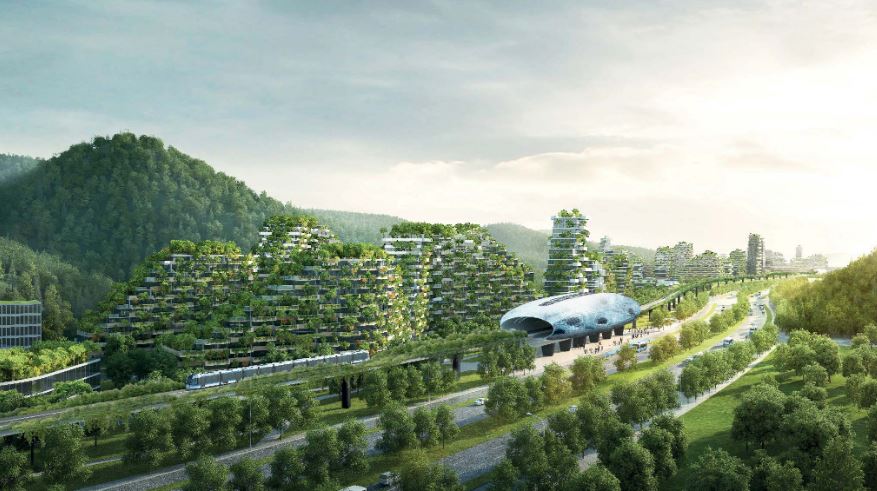
When I first encountered the name “forest city”, I thought of a sci-fi story set in a forest of cement—a Chinese analogy of high-density cities composed of high-rise buildings close together. Instead of a color scheme of gray and brown, the buildings were wrapped with plants and vegetation in myriad shades of green. My imagination is pretty close to the reality.
The concept of smart forest city is the brainchild of the Italian architecture firm Stefano Boeri Architetti (SBA) whose latest bid reportedly places 7.5 million trees and plants in Cancun, Mexico. SBA’s green footprint is global especially in China where rapid urbanization draws international builders, architects and investors to try out their Chinese dreams. On its website, SBA claimed Liuzhou Forest City was “the first Forest City in the world” in which all buildings and infrastructure were “almost entirely covered by plants and trees of a wide range of varieties and sizes.” Surrounded by forests and mountains, Liuzhou, a city in China’s southwestern Guangxi province, makes a perfect location for SBA’s green dream to soar.
Plus, after China’s top leader President Xi’s southern visit in 2018, the idea of “Park City” was hatched, prompting a spree of urban “greening” competition. As the name suggests, Chinese cities are modeling after urban development in New York City, London and the like to build large urban parks in busy urban centers, allowing cities to live in harmony with nature. In other words, urban sustainable development is the theme for many a Chinese city. This August, Liuzhou became one of the first experiment cities in the province selected for a three-year “Park City Development” scheme. Chinese netizens rave about the decision to transform the city into a livable park.
China has been highly researched and studied by Western intellectuals in the last two decades. I must say I am hearing about, and of, China more frequently outside China than inside. Why has China become of great interest for American scholars and researchers? Are they truly learning about China with good intentions or out of spite? China’s development impresses me and it poses to me as a case study from which to draw lessons and experience. Although China has become a hotspot for “vertical forest,” the concept does not always fit in. One reason is the fact that the biggest cost is on the trimming of trees seasonally. SBA’s first “vertical forest” in Milan shows a resident will have to pay for maintenance every year about US$72 per square meter, which is around 20 percent more than the normal maintenance price. However, a single adult tree can absorb 48 pounds of CO2 and release about 260 pounds of oxygen per year. The abundance of plants will improve air quality and pollution—exactly what a city needs.
After China’s top leader President Xi pledged to the United Nations this fall that his country will go carbon-neutral by 2060 in order to meet the Paris Climate Agreement goal, we should not be surprised to see such futuristic ideas as the Vertical Forest City and alike emerge in China like mushrooms. China is switching gears toward sustainable development with strong leadership and determination. By comparison, the largest polluting countries such as the United States, India, Russia, Brazil, and Australia have not signed on a cutback on carbon emissions. In order to meet the target of reducing carbon emissions, China will need tons of trees and plants in cities and towns. Reforestation is a significant strategy to capture a huge amount of carbon dioxide in the atmosphere. In view of the rapid loss of tropical forests, from Brazil’s Amazon rainforest to Indonesia, where deforestation dropped 60 percent in 2017, humankind needs to slow down exploitation of forest resources for economic gain and look for alternatives to substitute such declining natural resources.
I’d like to reiterate an opinion that many a scientists and tree huggers share—we do not lack solutions, we only lack leadership. China may not be a perfect world leader recognized by democratic states. But China has leadership who understands the importance of sustainable development. Like in the U.S., businesses that have strong environmental, social and governance (ESG) criteria tend to maintain good rapport with consumers. Governments also need ESG criteria in order to maintain sustainability and promote prosperity. If only global leaders will emulate one another for best practices of sustainable development, perhaps the concept of “vertical forest city” will be seeded much more widely and wildly. Urban rewilding, why not?
